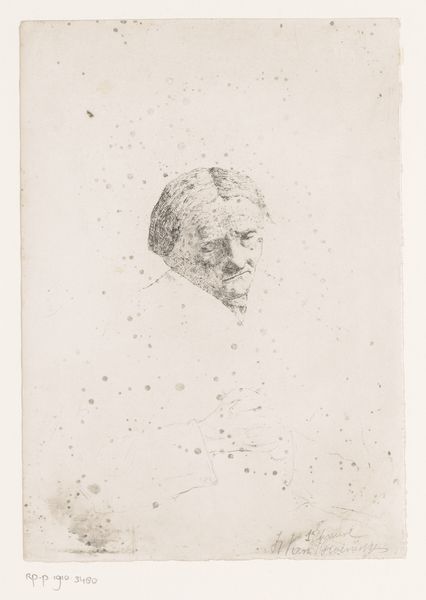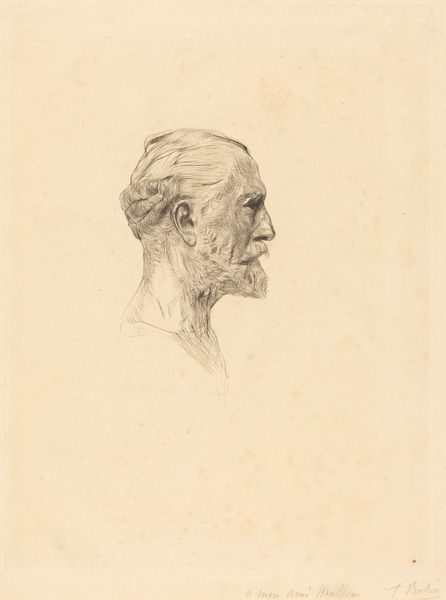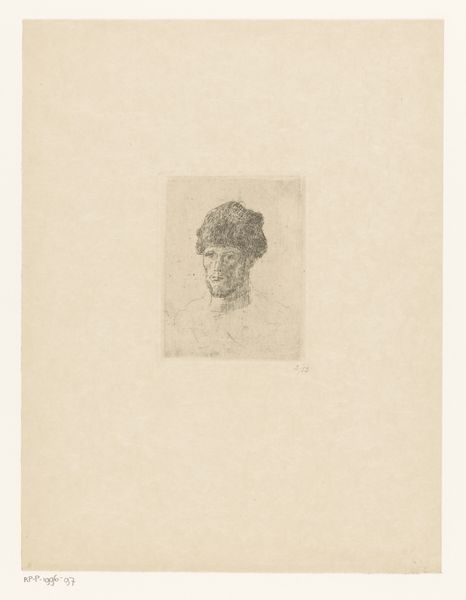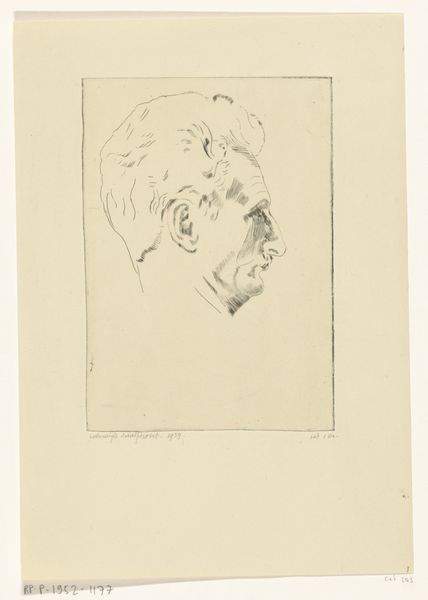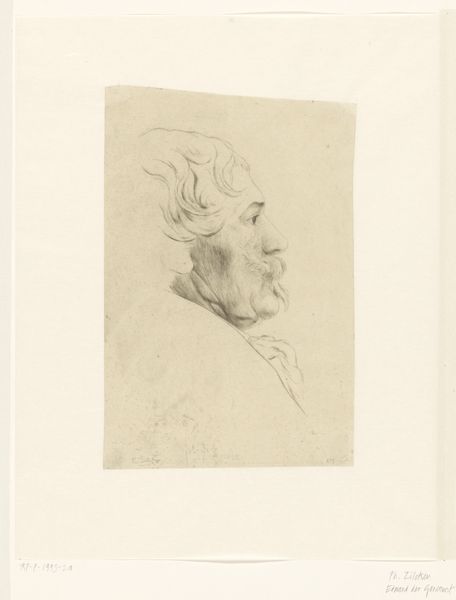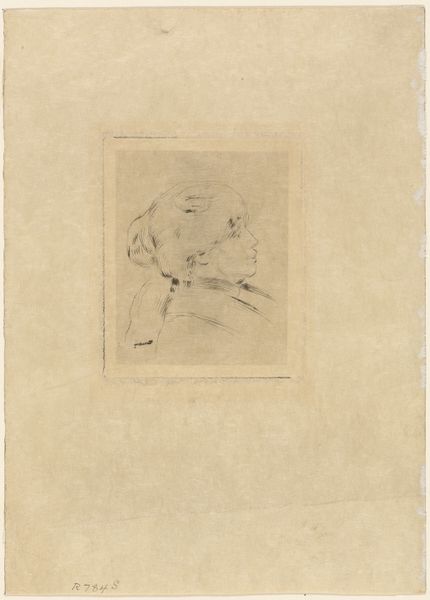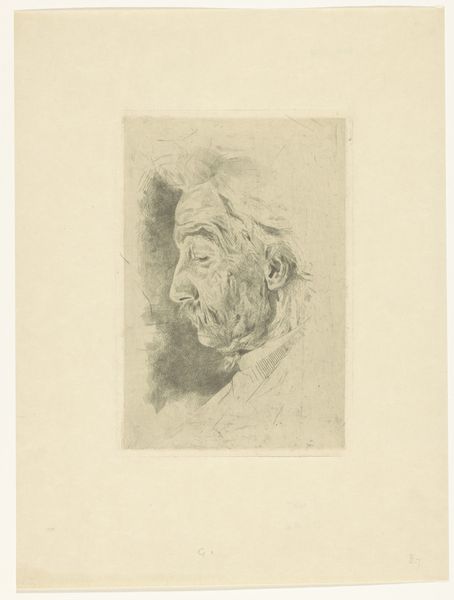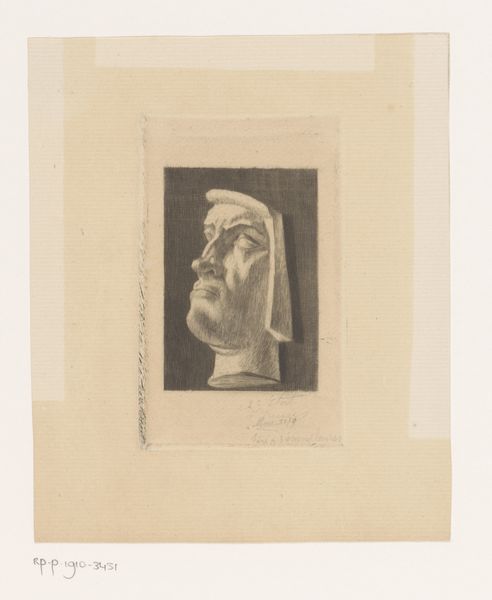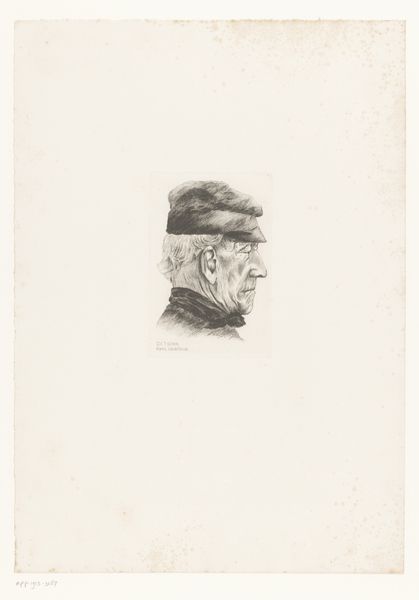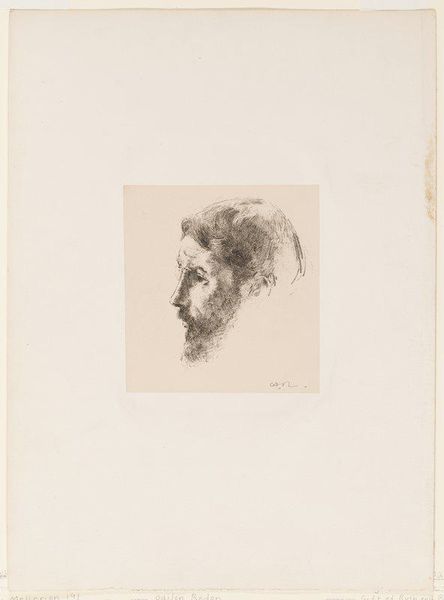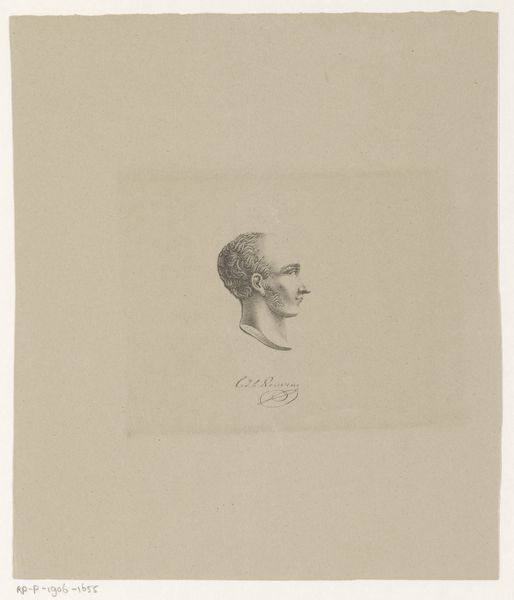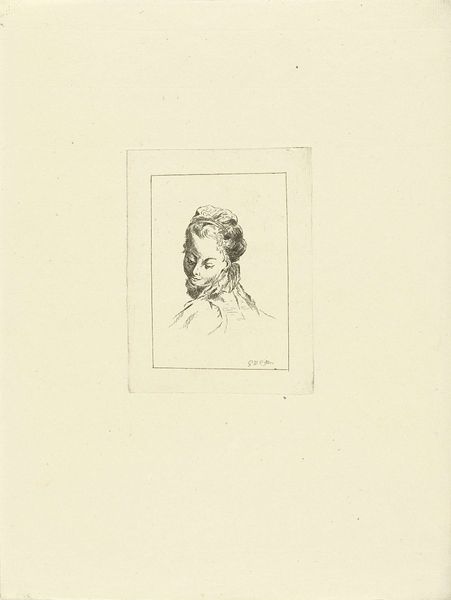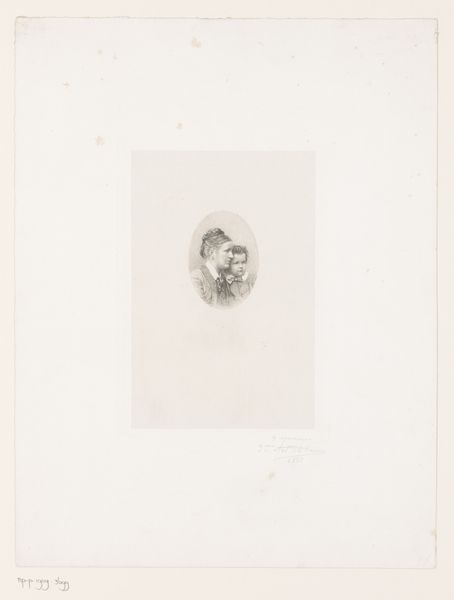
drawing, pencil
#
portrait
#
pencil drawn
#
drawing
#
light pencil work
#
shading to add clarity
#
pencil sketch
#
pencil
#
pencil work
#
realism
Dimensions: height 148 mm, width 240 mm
Copyright: Rijks Museum: Open Domain
Curator: A certain fragility emanates from this study. Editor: Indeed. What we see here is Auguste Rodin's "Portrait of Antonin Proust," a pencil drawing created sometime between 1884 and 1888, now housed here at the Rijksmuseum. The delicacy of the lines really strikes me. Curator: It’s interesting to consider Rodin’s context. Here he’s using pencil, a readily available, mass-produced material to capture the likeness of Proust, a figure of some importance. It makes one think about accessibility and the means by which images were disseminated at the time. Editor: I’m drawn to the economy of line, that ability to suggest form and depth with such minimal means. Note the hatching and cross-hatching, used sparingly yet so effectively to define the planes of Proust’s face and neck. Semiotically, it speaks volumes despite its simplicity. Curator: Proust was, after all, a journalist, politician, and eventually Minister of Arts. How much was he involved in the Parisian artistic circles? Did he support the careers of other artists like Rodin? Understanding his relationship to Rodin and other artists could shed more light into the intention of this piece. Editor: Certainly context informs interpretation, but I also believe there's a purity in appreciating the sheer technical skill on display. Look at the way Rodin captures the subtle nuances of light and shadow, creating a palpable sense of volume. And observe the gaze. Curator: The work’s availability through reproductions, its affordability, would have allowed a broader public access to a likeness of Proust. Who was the pencil made by, and what was the source of the paper? The answer could reveal socio-economic relationships that underpin the production and circulation of images. Editor: Perhaps. Ultimately, however, this drawing is more than just a record of a prominent figure or a reflection of social dynamics. It’s a masterclass in form, line, and composition—an exquisite example of portraiture that transcends its historical moment. Curator: Yes, though that moment informs every choice, down to the tools Rodin chose to pick up. Editor: A fascinating look indeed.
Comments
No comments
Be the first to comment and join the conversation on the ultimate creative platform.
